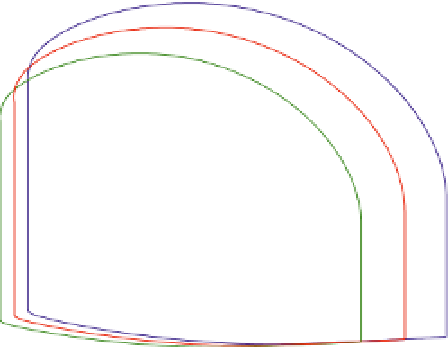Biomedical Engineering Reference
In-Depth Information
R
LA
MV
AV
Z
SO
R
SA
R
SV
R
RA
TV
PV
Z
PO
R
PA
R
PV
LA
LV
C
SA
C
SV
RA
RV
C
PA
C
PV
Systemic Circulation
Pulmonary Circulation
RA = Right Atrium
R
RA
= Right Atrial Resistance
TV = Tricuspid Valve
RV = Right Ventricle
PV = Pulmonic Valve
Z
PO
= Pulmonic Characteristic Impedance
C
PA
= Pulmonic Arterial Compliance
R
PA
= Pulmonic Peripheral Resistance
C
PV
= Pulmonic Venous Compliance
R
PV
= Pulmonic Venous Resistance
FIGURE 4.50
Application of the canine left ventricle model to hemodynamic description of the complete
human cardiovascular system.
LA = Left Atrium
R
LA
= Left Atrial Resistance
MV = Mitral Valve
LV = Left Ventricle
AV = Aortic Valve
Z
SO
= Systemic Characteristic Impedance
C
SA
= Systemic Arterial Compliance
R
SA
= Systemic Peripheral Resistance
C
SV
= Systemic Venous Compliance
R
SV
= Systemic Venous Resistance
Adapted from [25].
150
+10% volume
100
-10%
50
0
50
60
70 80 90
Ventricular Volume V
LV
[ml]
100
110
120
130
FIGURE 4.51
Left ventricular pressure-volume work loops computed for the complete human circulation
model (Figure 4.50) for control (middle curve) and varied preload, achieved by varying total blood volume (5 liters)
10 percent.
blood volume, 5 liters, by 10 percent. As for the isolated left ventricle model, stroke volume
increases with increased preload via the Frank-Starling mechanism, and this increase is
moderated by increased end-systolic volume due to increased afterload. Preload may be
increased in the natural system by increased central venous pressure, resulting from
decreased venous compliance caused by sympathetic venoconstriction, or by augmented














































































